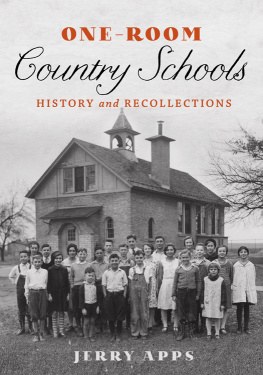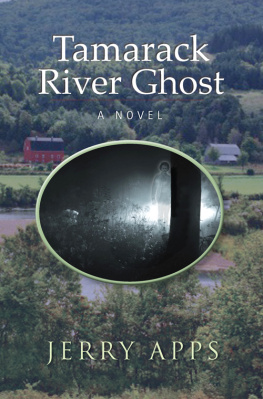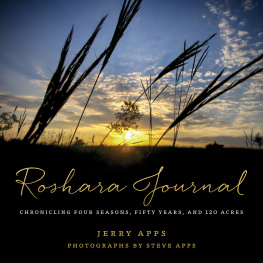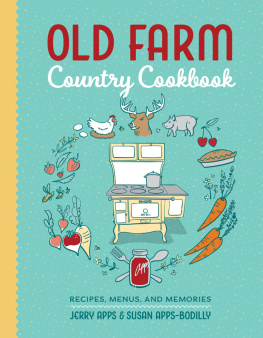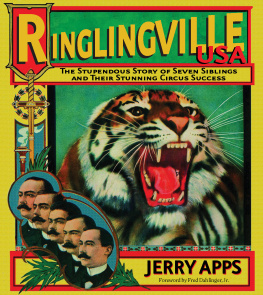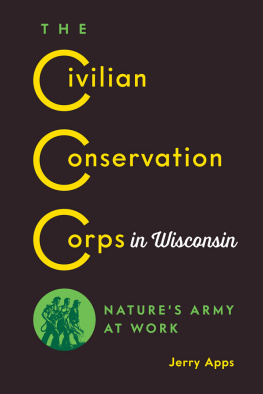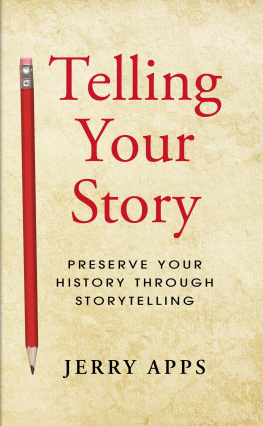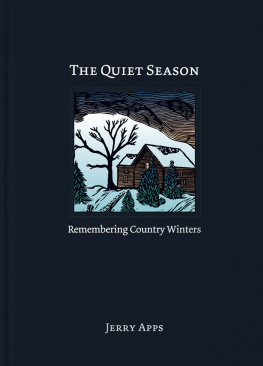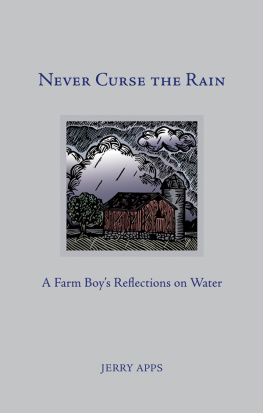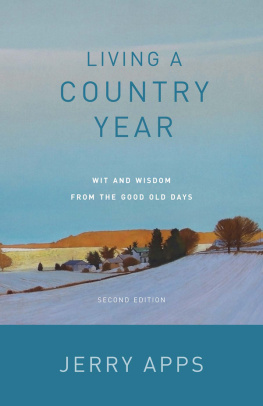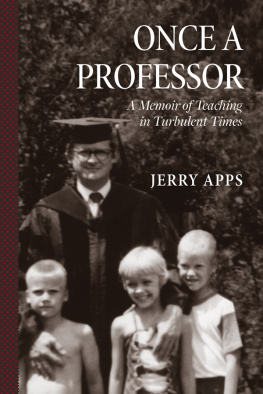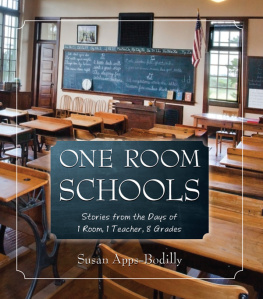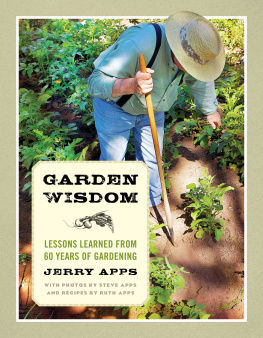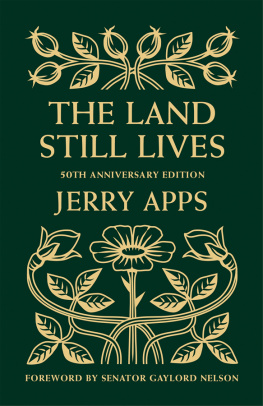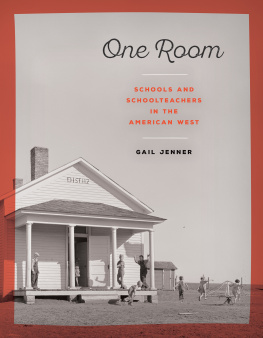Apps - One-Room Country Schools
Here you can read online Apps - One-Room Country Schools full text of the book (entire story) in english for free. Download pdf and epub, get meaning, cover and reviews about this ebook. year: 2015, publisher: Wisconsin Historical Society Press, genre: Politics. Description of the work, (preface) as well as reviews are available. Best literature library LitArk.com created for fans of good reading and offers a wide selection of genres:
Romance novel
Science fiction
Adventure
Detective
Science
History
Home and family
Prose
Art
Politics
Computer
Non-fiction
Religion
Business
Children
Humor
Choose a favorite category and find really read worthwhile books. Enjoy immersion in the world of imagination, feel the emotions of the characters or learn something new for yourself, make an fascinating discovery.
One-Room Country Schools: summary, description and annotation
We offer to read an annotation, description, summary or preface (depends on what the author of the book "One-Room Country Schools" wrote himself). If you haven't found the necessary information about the book — write in the comments, we will try to find it.
A popular collection of memories and recollections from people who learned at and taught in one-room schools in Wisconsin, including former pupil Jerry Apps, the books author.
One-Room Country Schools — read online for free the complete book (whole text) full work
Below is the text of the book, divided by pages. System saving the place of the last page read, allows you to conveniently read the book "One-Room Country Schools" online for free, without having to search again every time where you left off. Put a bookmark, and you can go to the page where you finished reading at any time.
Font size:
Interval:
Bookmark:


Published by the Wisconsin Historical Society Press
Publishers since 1855
1996, 2015 by Jerold W. Apps
First edition published 1996
Wisconsin Historical Society Press edition 2015
E-book edition 2015
For permission to reuse material from One-Room Country Schools (ISBN 978-0-87020-752-5; e-book ISBN 978-0-87020-753-2), please access www.copyright.com or contact the Copyright Clearance Center, Inc. (CCC), 222 Rosewood Drive, Danvers, MA 01923, 978-750-8400. CCC is a not-for-profit organization that provides licenses and registration for a variety of users.
wisconsinhistory.org
Photographs identified with WHi or WHS are from the Societys collections; address requests to reproduce these photos to the Visual Materials Archivist at the Wisconsin Historical Society, 816 State Street, Madison, WI 53706.
On the front cover: Hillcrest School, a one-room school in Waukesha County, circa 1933. WHi Image ID 86209
Cover design by Andrew Brozyna
19 18 17 16 15 1 2 3 4 5
Library of Congress Cataloging-in-Publication Data
Apps, Jerold W., 1934
One-room country schools : history and recollections / Jerry Apps.
Madison, WI : Wisconsin Historical Society Press, 2015.
Includes bibliographical references and index.
Description based on print version record and CIP data provided by publisher; resource not viewed.
LCCN 2015036939 (print) | LCCN 2015036783 (ebook) | ISBN 9780870207532 (Ebook) | ISBN 9780870207525 (paperback) | ISBN 9780870207532 (ebook)
LCSH: Rural schools--Wisconsin--History. | BISAC: HISTORY / United States / State & Local / Midwest (IA, IL, IN, KS, MI, MN, MO, ND, NE, OH, SD, WI).
LCC LC5147.W6 (print) | LCC LC5147.W6 A67 2015 (ebook) | DDC 371.009173/409775--dc23
LC record available at http://lccn.loc.gov/2015036939
Dedicated to my country school teachers:
Theresa Piechowski, Maty Murty, Violet Lovejoy, Blanche Swett,
Maxine Thompson, and Faith Jenks
After graduating from a one-room country school in 1947, I took my elementary education for granted. But it came to mind as more people throughout the United States began discussing the shortcomings of public education and how it could be improved. As I became acquainted with these discussions, it occurred to me that my elementary education had been excellent, particularly in such basics as reading, spelling, arithmetic, writing, geography, and public speaking. This foundation has served me well over the years, and I gained it in an extremely modest building with all eight grades working together under the direction of one teacher.
In writing this book, I set out to record what went on in these little one-room schools that were scattered throughout Wisconsin as well as in many other states. How did these schools provide an excellent education for most of the students who attended them? And likewise, what were their shortcomings?
In 1993, when I began doing the research and writing for One-Room Country Schools, I had no idea if there would be any interest for such a book. By the late 1960s in Wisconsin, all but a couple of these little schoolswhere one teacher taught all eight grades in one roomhad been closed. I believed that a considerable number of those who attended such a school, myself included, were still around, and I even knew a few teachers who had taught in these schools. So I had a rich source of stories and research materials for the book. Trying to convince a publisher that enough people would buy such a book became a considerable challenge.
Who cares about one-room schools these days? one editor asked me.
A few weeks after that rather depressing question, I chatted with Roberta Spanbauer, who at the time was associated with Amherst Press, a small publisher in Amherst, Wisconsin. Roberta was intrigued with the idea, but she was also concerned about potential sales. I tried to assure her that there were hundreds, perhaps thousands of us who had attended one-room schools, and such a book should interest this group. I also mentioned that I knew several one-room schoolteachers who would surely be interested, as teachers are readers. I dont think I convinced her about the potential market but she decided to do the book nonetheless.
Shortly after the book was published, I was a guest on Wisconsin Public Radios The Larry Meiller Show at eleven a.m. The show is structured so listeners can call in with questions, and calls poured in nonstop from the moment Larry mentioned the topic to the time when we went off the air. As the book was not yet in bookstores, I gave listeners the phone number for Amherst Press.
The next day, I heard that the phone in the press office began ringing shortly after the show, and it continued ringing all afternoon and into the early evening. It appeared there was more than a passing interest in the history of Wisconsins one-room schools after all.
The book was reprinted three times, and then taken over by a second publisher with sales continuing. Now the Wisconsin Historical Society Press is offering this reissue. Why the continuing interest? Nostalgia counts for some of it, as people enjoy reading about an earlier time, especially when the stories relate to their own experiences. But the interest in one-room school history goes much deeper than triggering early memories. In this country, the importance of public education for all children traces back to the nations early beginnings. Thomas Jefferson was an early supporter of public education as a crucial component of a democracy. He believed strongly that our freedom in the United States depends on self-government, and for self-government to succeed, people need a readily accessible, free public education. A self-governing nation requires its people to know history, to know the three Rsreading, writing, and rithmeticand above all, to know how to think, both critically and creatively. A quality education, provided free to all of the nations children, is one positive way to assure that our freedom and self-government will continue to succeed.
Early proponents of a free, quality public education also wanted it supervised as close as possible to where the education was occurring. In the case of one-room schools, each was located in a school districtoften a geographical area about four miles square with the one-room school in the center. The size of the school district was such that most students did not have to walk more than two miles one way to the school. Each school district had its own school board, which was elected by the citizens in the district. At the time when one-room schools flourished, these little school boards were the smallest form of government, followed by the town, county, and then state governments.
School board members determined school expenditures, they hired and fired teachers, and they made sure the school was properly maintained. Generally, one or more and sometimes all of the school board members had children attending the school, so they knew well what was happening from day to day. I recall when I was in about fifth grade, that following the Christmas break, we had a new teacher. It was years later that I learned that the school board fired the previous teacher for incompetence.
The one-room country school provided a solid, basic education for its students. It was there where I learned how to spell, how to write, do math, learn about geography and history. But probably most important of all, I learned how to read and appreciate books, and how to learn on my own.
Font size:
Interval:
Bookmark:
Similar books «One-Room Country Schools»
Look at similar books to One-Room Country Schools. We have selected literature similar in name and meaning in the hope of providing readers with more options to find new, interesting, not yet read works.
Discussion, reviews of the book One-Room Country Schools and just readers' own opinions. Leave your comments, write what you think about the work, its meaning or the main characters. Specify what exactly you liked and what you didn't like, and why you think so.

